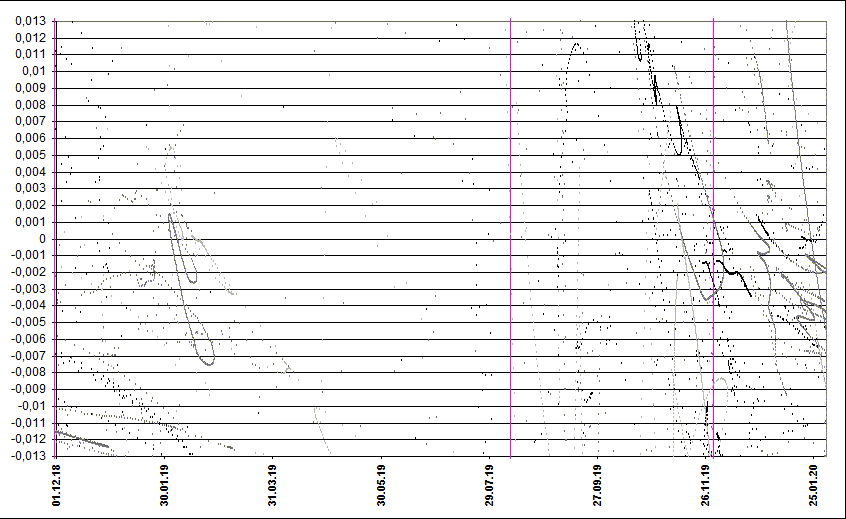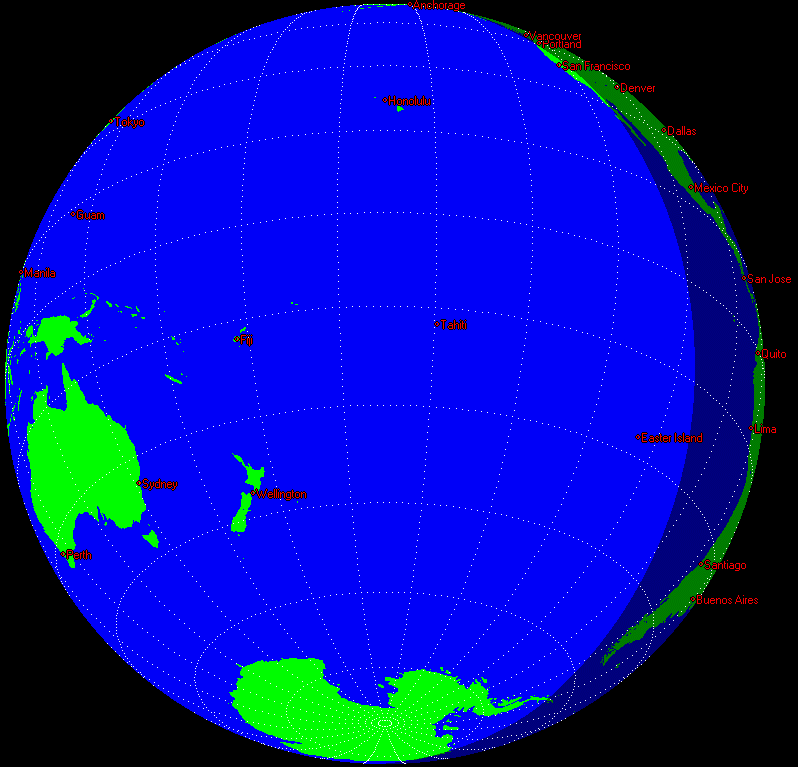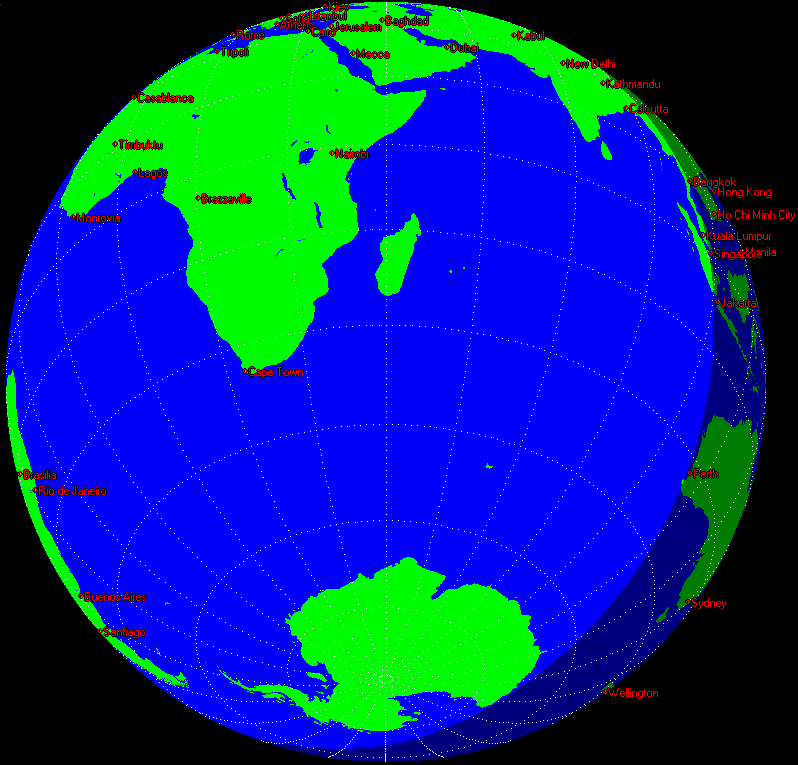72P-ids 2019: prediction of activity
to the list of predictions

Fig. 1. Space-temporal projection of 72P-ids trails parts onto their minimal distance passages in 2017 (correspondence between colours of the particles and their ejection velocities can be seen here).
Im 2019 the Earth will come close to two trails of the comet 72P/Denning-Fujikawa, which were ejected in 1802 and 1908. The first is encounter with 1908 trail, its computed time is 0:43 UT on 13 November, computed distance is 0.00019 AU, particles ejection velocity is 96.43 m/s, fM(fMD)=3.045, theorectical radiant is RA=264.9°, Dec=-26.8°, V=18 km/s.

Fig. 2. The Earth as seen from coming 72P-ids meteors (RA=264.9°, Dec=-26.8°) during the expected maximum time of outburst from 1908 trail at 0:43 UT on 13 November.
We can see that the radiant position is quite close to the Sun, as it faces mainly sunlit surface of the Earth. It makes almost impossible any reliable observations of the shower besides radioobservations. High ejection velocity suggests that any activity could be mainly in radiorange, which also suggests that radio method is the most appropriate for this case.
The encounter with 1802 trail has its computed maximum time at 10:50 UT on 13 November. This trail is 5.5 times less dense that 1908 trail, however it encounters the Earth with larger particles ejected with velocity of 23.38 m/s, which compencates low density to some extent. Theoretical radiant is RA=259.9°, Dec=-38.6°, V=19 km/s.
The encounter with 1802 trail has its computed maximum time at 10:50 UT on 13 November. This trail is 5.5 times less dense that 1908 trail, however it encounters the Earth with larger particles ejected with velocity of 23.38 m/s, which compencates low density to some extent. Theoretical radiant is RA=259.9°, Dec=-38.6°, V=19 km/s.

Fig. 3. The Earth as seen from coming 72P-ids meteors (RA=259.9°, Dec=-38.6°) during the expected maximum time of outburst from 1802 trail at 10:50 UT on 13 November.
Activity level, if any, from this encounter, is also expected to be low, and, as in the first case, the radiant is situated close to the Sun in the sky, so again we should rely mostly on radioobservations.
References
1. "Comet's dust 2.0" program by S. Shanov and S. Dubrovsky. [Used for orbital computations.]
2. Lyytinen E, van Flandern T. "Predicting the strength of Leonid outbursts", 2000, Icarus, P. 158-160.
3. Jenniskens P. Meteor showers and their parent comets, 2006, 780 p. 4. Kasuo Kinoshita, http://jcometobs.web.fc2.com/ [Orbital elements of the comet 72P/Denning-Fujikawa]
5. Hewgill G. Xearth 1.1.0 (Software program), 2003. 6. Molau S. Results of the IMO Video Meteor Network – December 2014. http://www.imonet.org/reports/201412.pdf 7. 2016 Meteor Shower Calendar, http://imo.net/files/data/calendar/cal2016.pdf
References
1. "Comet's dust 2.0" program by S. Shanov and S. Dubrovsky. [Used for orbital computations.]
2. Lyytinen E, van Flandern T. "Predicting the strength of Leonid outbursts", 2000, Icarus, P. 158-160.
3. Jenniskens P. Meteor showers and their parent comets, 2006, 780 p. 4. Kasuo Kinoshita, http://jcometobs.web.fc2.com/ [Orbital elements of the comet 72P/Denning-Fujikawa]
5. Hewgill G. Xearth 1.1.0 (Software program), 2003. 6. Molau S. Results of the IMO Video Meteor Network – December 2014. http://www.imonet.org/reports/201412.pdf 7. 2016 Meteor Shower Calendar, http://imo.net/files/data/calendar/cal2016.pdf